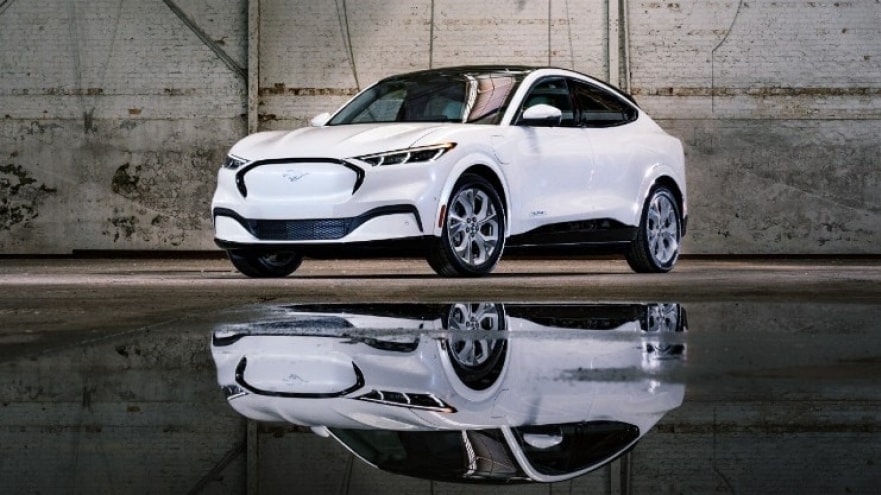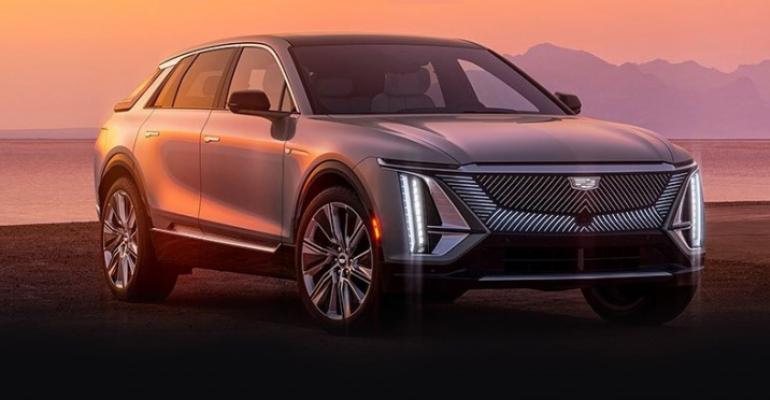General Motors hates Ford. And Ford hates General Motors. It’s always been that way, and it always will be.
While there are other great rivalries in the automotive industry, none come close to this one. That’s because GM and Ford are practically neighbors. Their headquarters are less than 10 miles (16 km) apart. Yet, that closeness doesn’t breed amity – it breeds animosity.
Each one is constantly hyper-aware of what the other is doing. Their spy network is extensive. The intel they have on each other is finely detailed. And while neither one likes to lose to another competitor, losing to their cross-town rival is the worst. The rivalry is like a modern-day feud between the Hatfields and McCoys, only without the shotguns.
And now we come to the EV battleground, which is raising their competitive intensity to a new level. Each one is highly motivated to outdo the other.
Right now the public perception is that Ford is in the lead. The Mustang Mach-E (pictured, below) is getting great reviews. The F-150 Lightning got so many reservations that Ford had to stop taking them. The electric version of the Transit van looks like it will meet the same acclaim.
CEO Jim Farley says Ford will be second only to Tesla in EV sales in the U.S. by the end of 2023. And Wall Street loves what he’s saying. Ford recently surpassed GM in market capitalization.

Meanwhile, GM is fuming. It believes it’s far ahead of Ford, and rightly so. It announced that Cadillac will be all-electric by 2030. Its goal is to stop selling any ICE vehicles by 2035. It already has two assembly plants dedicated to making only EVs and two more are on the way.
It’s completing a giant battery plant and has three more to go. It created a new business unit, Brightdrop, that will make electric vans that will finally allow GM to compete well against Ford in the lucrative commercial market.
CEO Mary Barra says GM can surpass Tesla in EV sales in the U.S. by 2025. Even so, the public perception is that Ford is in the lead.
Here’s my understanding of how their EV strategies evolved. I could be wrong on some things, but directionally I believe it’s correct.
Sometime in 2018 GM realized electric cars were going to be the future of the auto industry. So, it decided it wasn’t going to pussy-foot around. The thinking was, “If that’s where we’re going to end up, let’s just go there now.”
That meant it wasn’t going to do hybrids. And it wasn’t going to do plug-in hybrids either. Instead, it was only going to make battery-electrics, and it was going to jump into the deep end head-first.
The board approved a plan to develop all-new battery-electric vehicle (BEV) architectures. Everything would be clean sheet – no carryover parts. That’s a stunning development that’s never happened before in the history of the industry. It gave GM designers and engineers the kind of freedom that only startups enjoy.
The new approach allows GM to use one architecture for almost all its products. Small, medium, large – it doesn’t matter. All they do is vary the length or width to accommodate whatever body style they want to drop on the skateboard, or chassis.
And it comes with a modular battery pack that can be configured for small compacts all the way up to giant SUVs. This is going to slash future product-development time and cost because future products will use the same “guts.”
By dedicating plants to making only electrics GM is going to see a big jump in productivity. BEVs use fewer components, so assembly plants dedicated to BEVs enjoy up to 30% better productivity over plants that make internal-combustion-engine vehicles.
Just as important, GM decided to bring battery production in-house (with partners) instead of buying them from suppliers.
While all this detailed EV planning was taking place at GM, Ford was in turmoil. Its then-new CEO, Jim Hackett, a former furniture company executive, was trying to find his way.
But he did uncover a potential disaster in the making: Ford was going to do another “compliance car.” That is, an electric car that was designed to meet regulatory requirements, but not designed to cause customers to swoon and hightail it to the showrooms.
His message was essentially, “Why don’t we build something that people want to buy?” And so, the Mach-E was born.
But Hackett was brought in to be an interim CEO. And as soon as he turned 65 years old, he beat a hasty exit. It wasn’t until Farley took over as CEO in October 2020 that Ford really got focused.
Farley crafted a plan to electrify the company’s iconic products. That meant having electric versions of the Mustang, F-150 and Transit. They wouldn’t be as efficient as GM’s clean-sheet designs, but they would beat GM to market. That would give Ford first-mover advantage, or “firstest with the mostest.”
Farley also set his engineers to work on a clean-sheet BEV architecture and got the board to approve the construction of Blue Oval City outside of Memphis, TN – a massive, vertically integrated manufacturing complex dedicated to making BEVs. But none of that will be available until sometime in 2025.
 So, here’s the timeline I see unfurling. Ford is winning the first round in the EV war against GM. It will probably hold onto that lead through 2022 and maybe 2023. But in 2024 GM will surge ahead as its strategic plan fully blossoms. It will be clearly ahead of Ford in 2025 and 2026.
So, here’s the timeline I see unfurling. Ford is winning the first round in the EV war against GM. It will probably hold onto that lead through 2022 and maybe 2023. But in 2024 GM will surge ahead as its strategic plan fully blossoms. It will be clearly ahead of Ford in 2025 and 2026.
That’s when Ford will start to catch up, or at least have the resources to do so. And that’s when we’ll have a clear picture of whose strategy is superior, or who executed it the best.
The battle will be intense. The animosity will be palpable. The hatred will continue. And all of this will push both of them to do better than they would without it.
John McElroy (pictured above, left) is editorial director of Blue Sky Productions and producer of “Autoline Detroit” for WTVS-Channel 56, Detroit.





